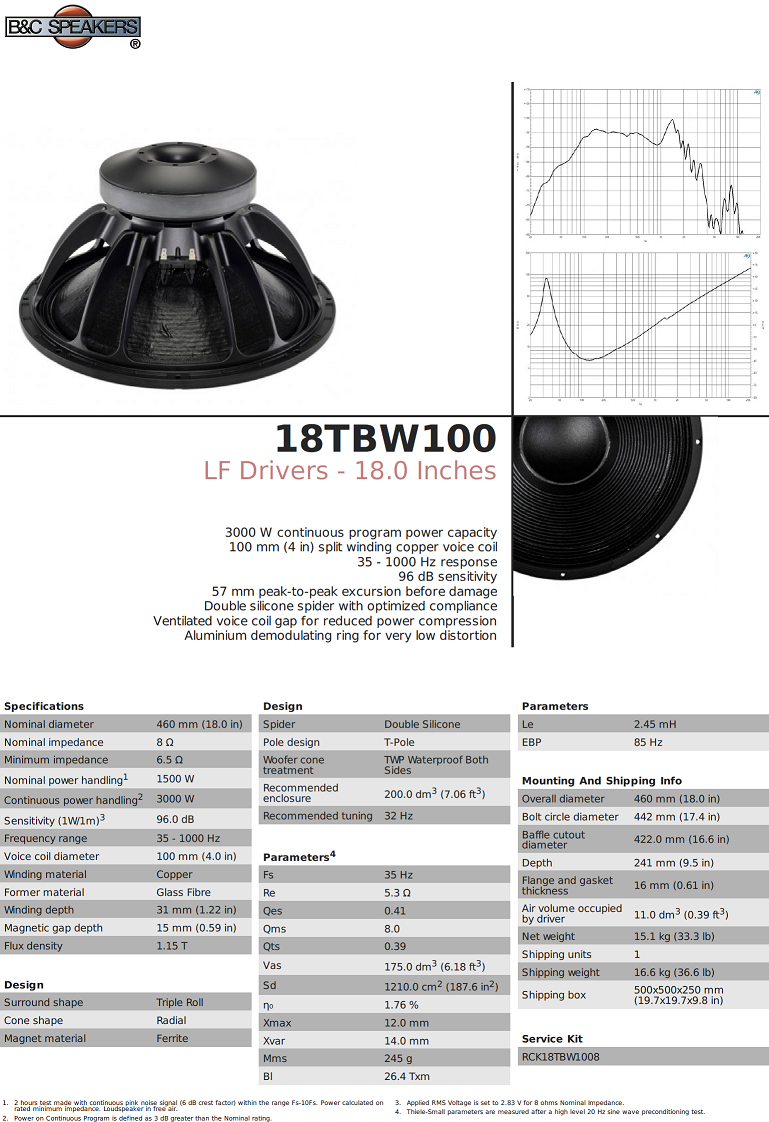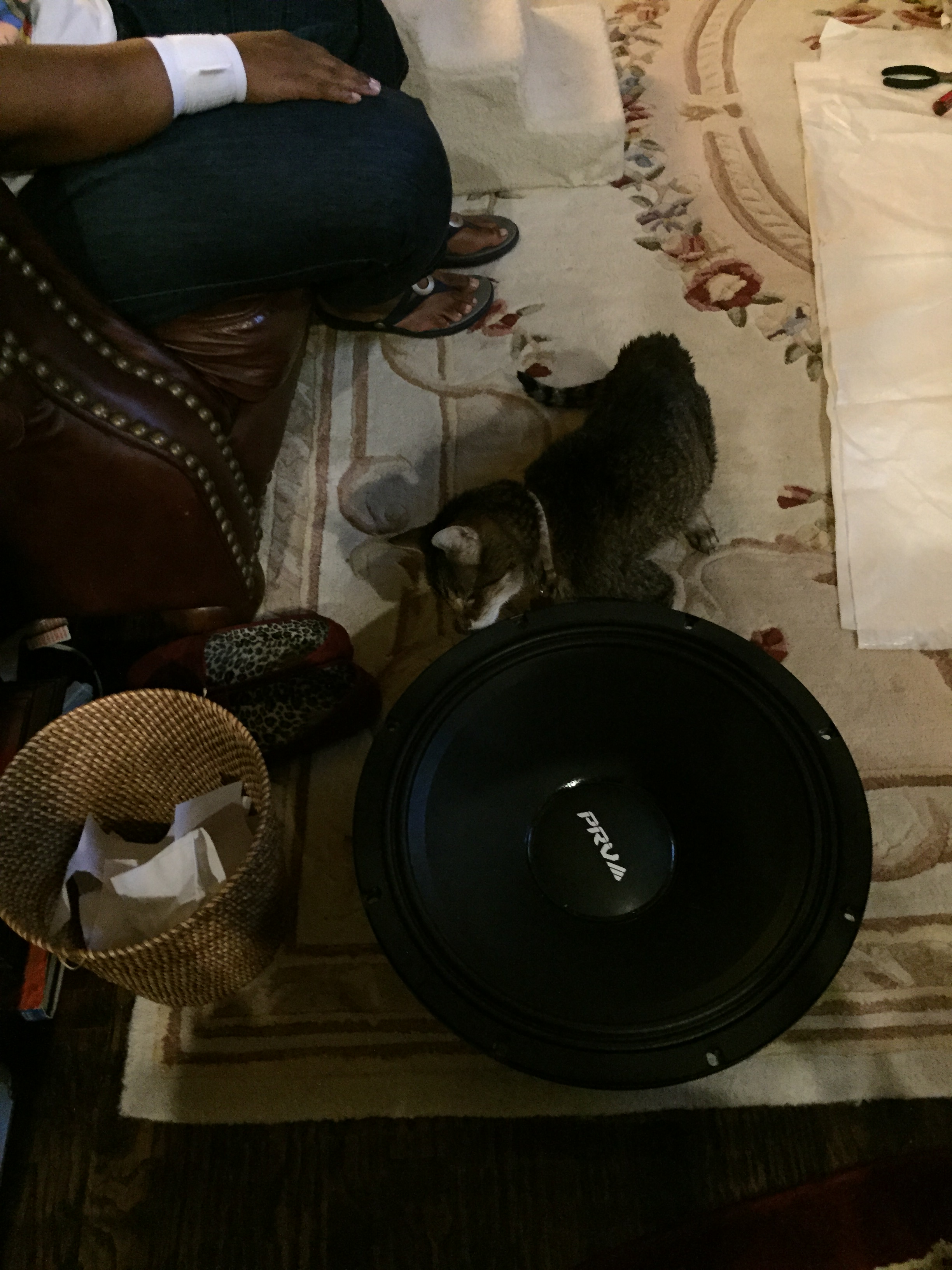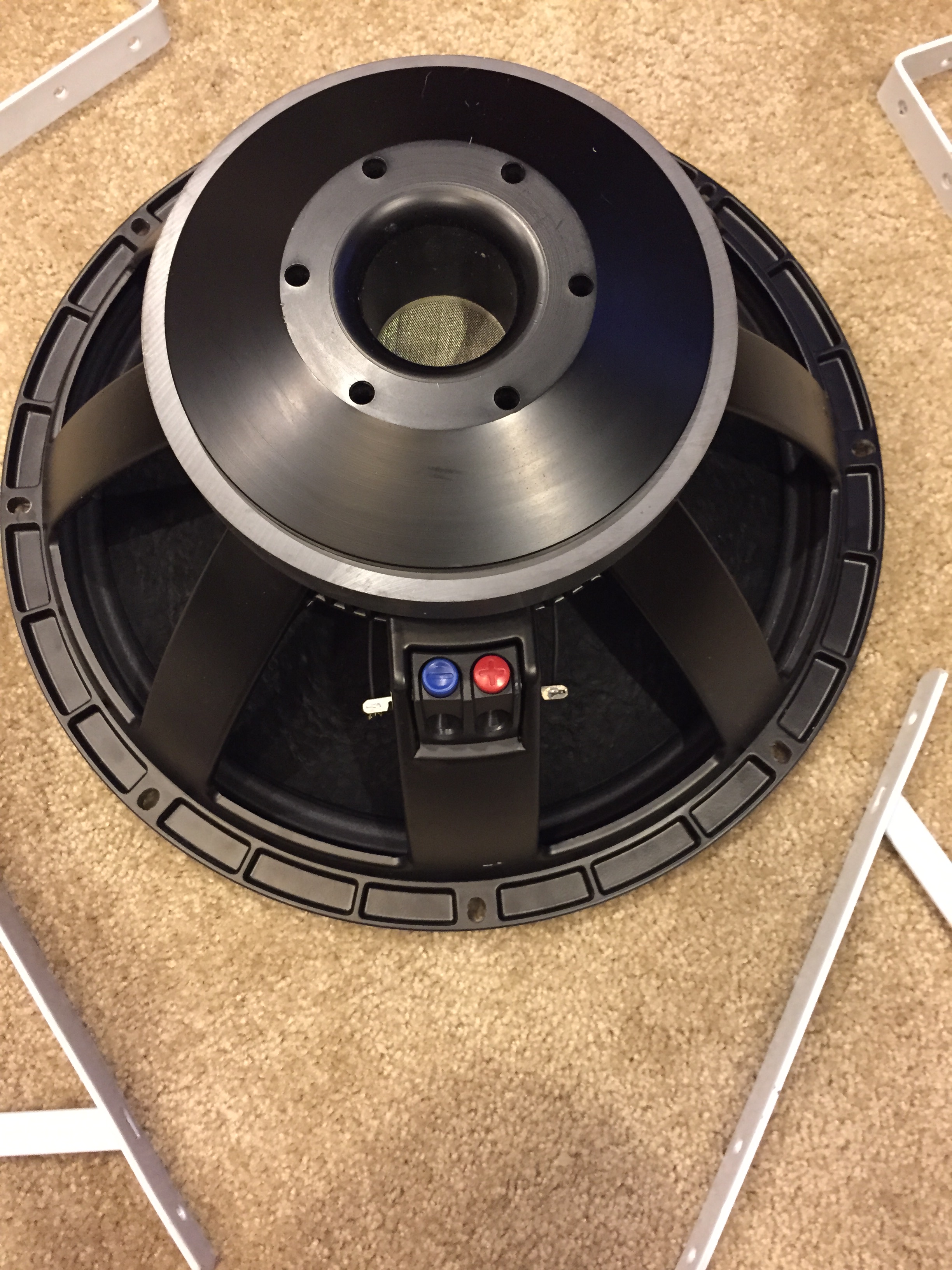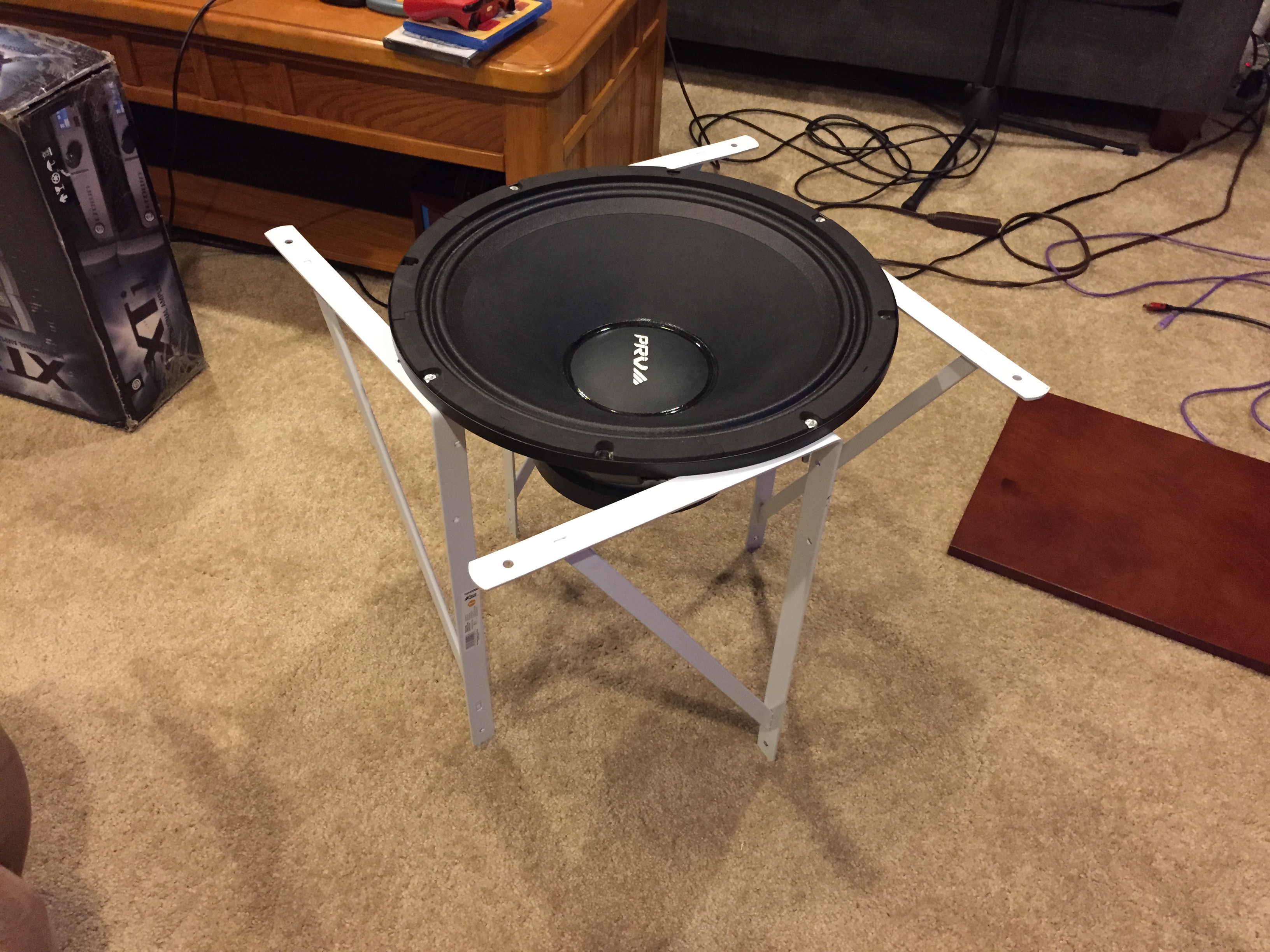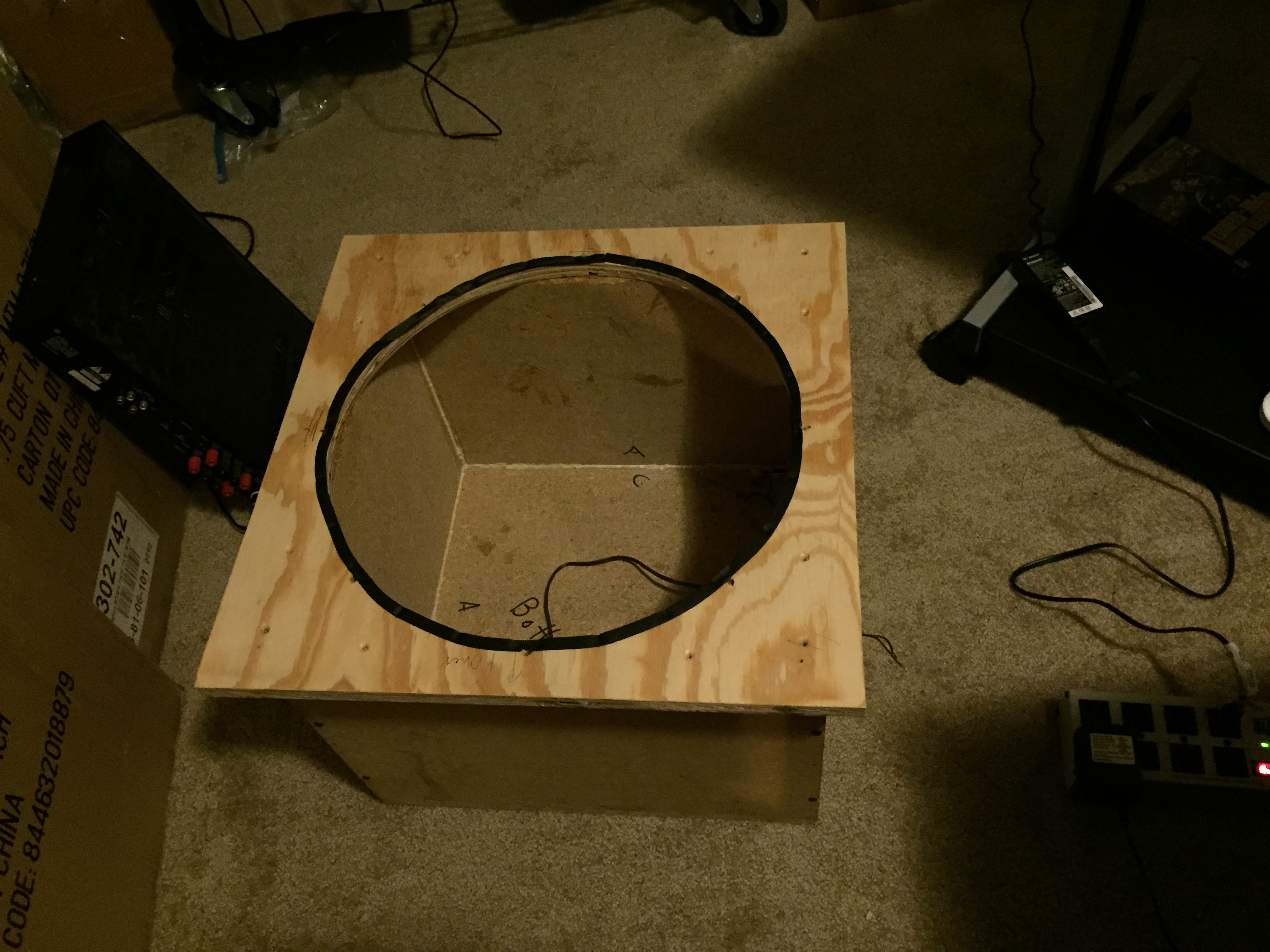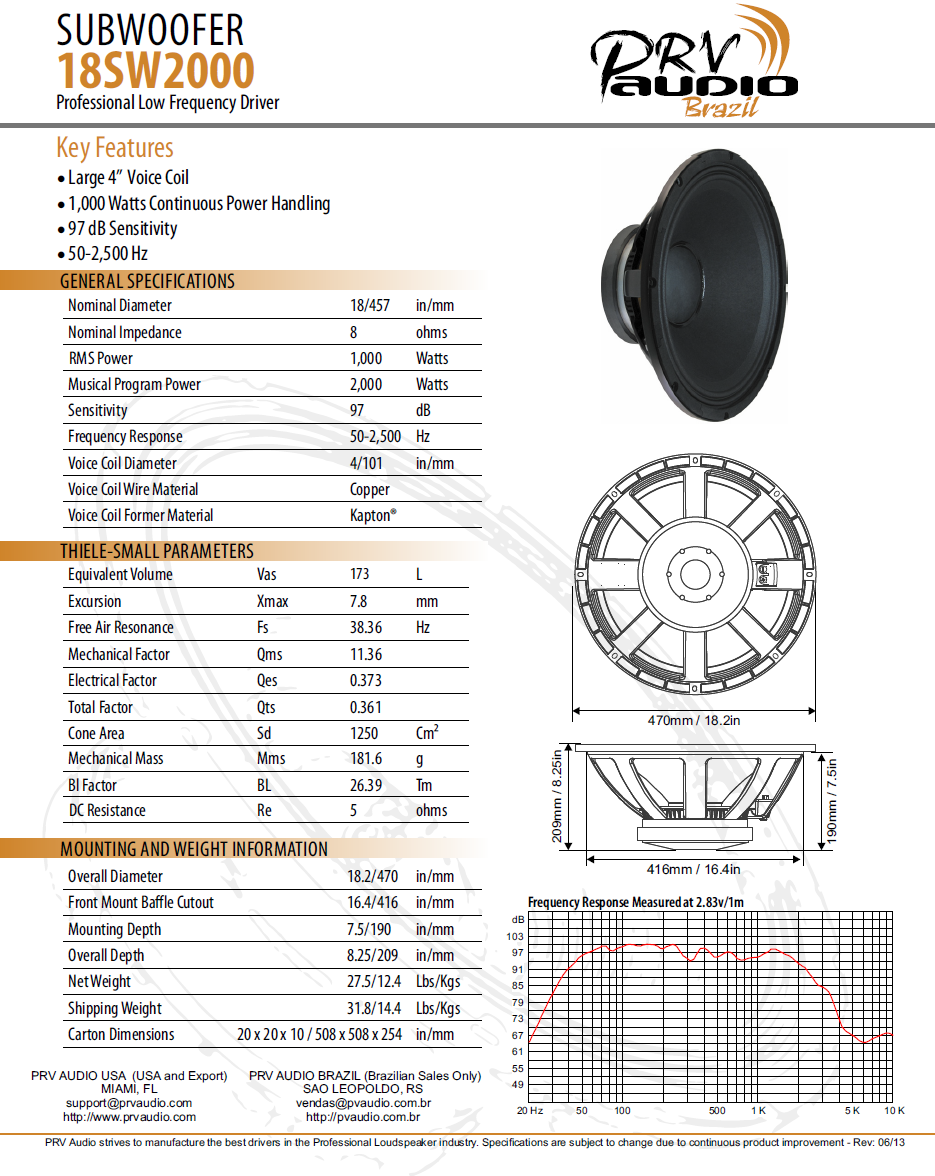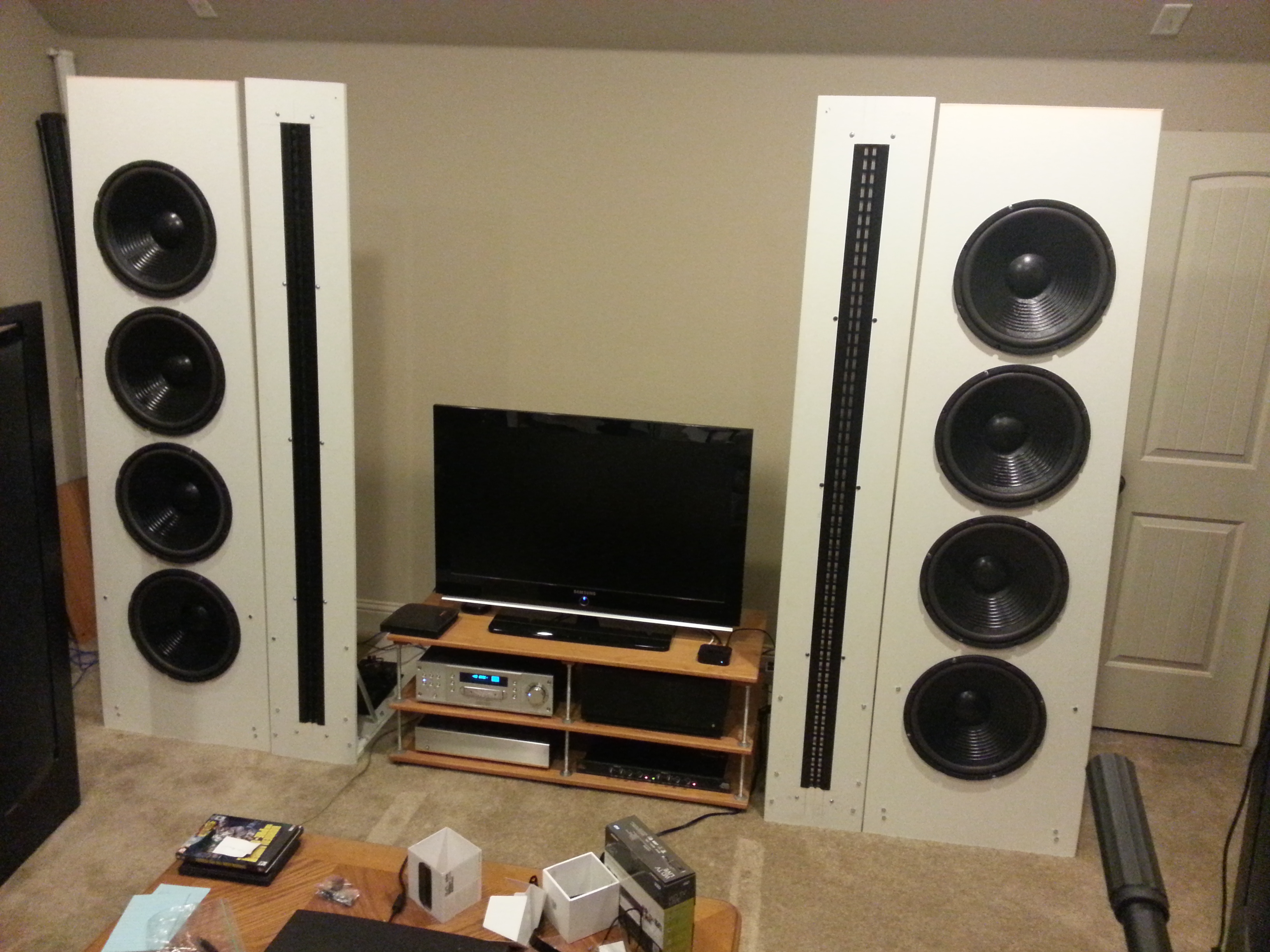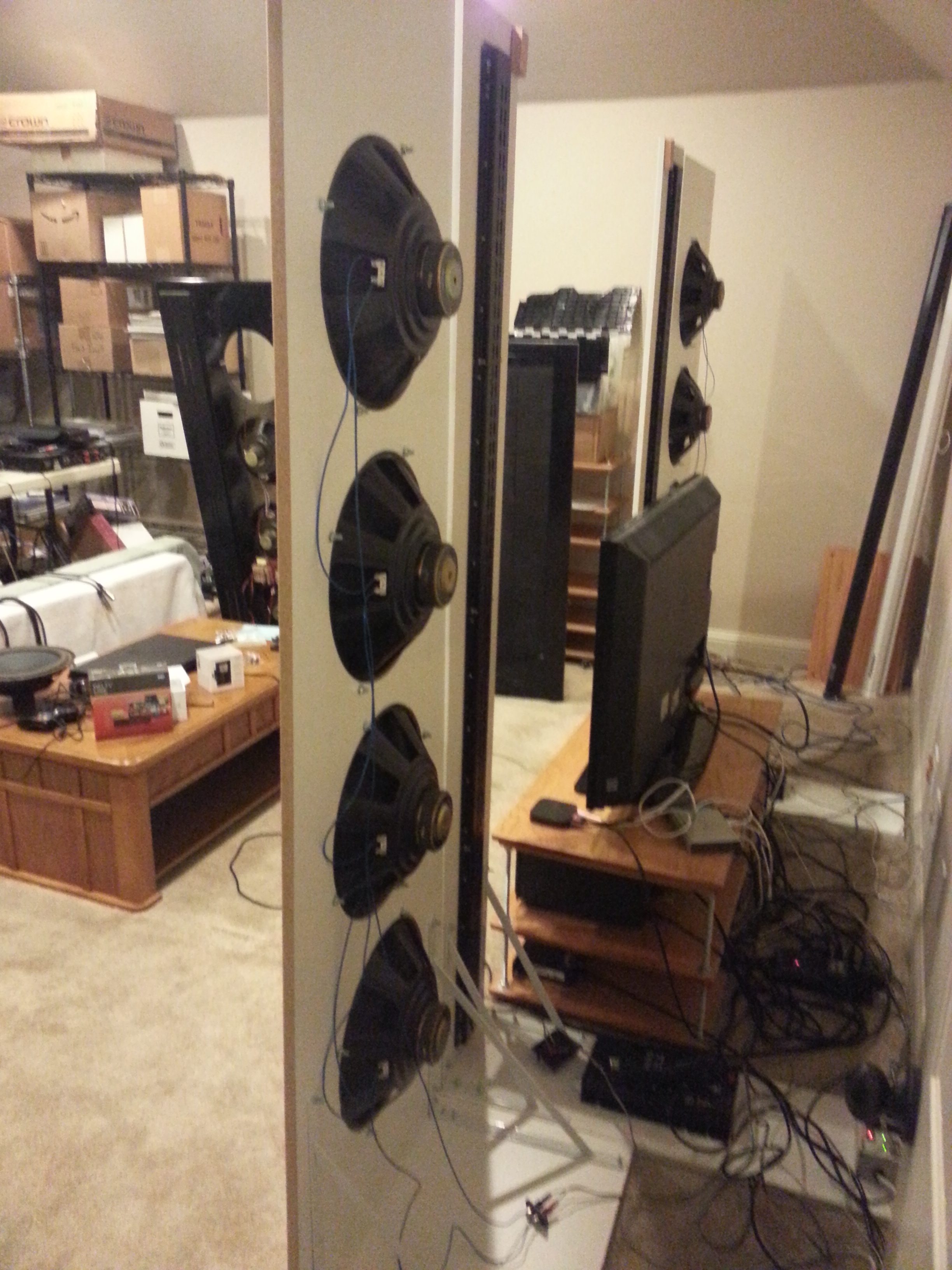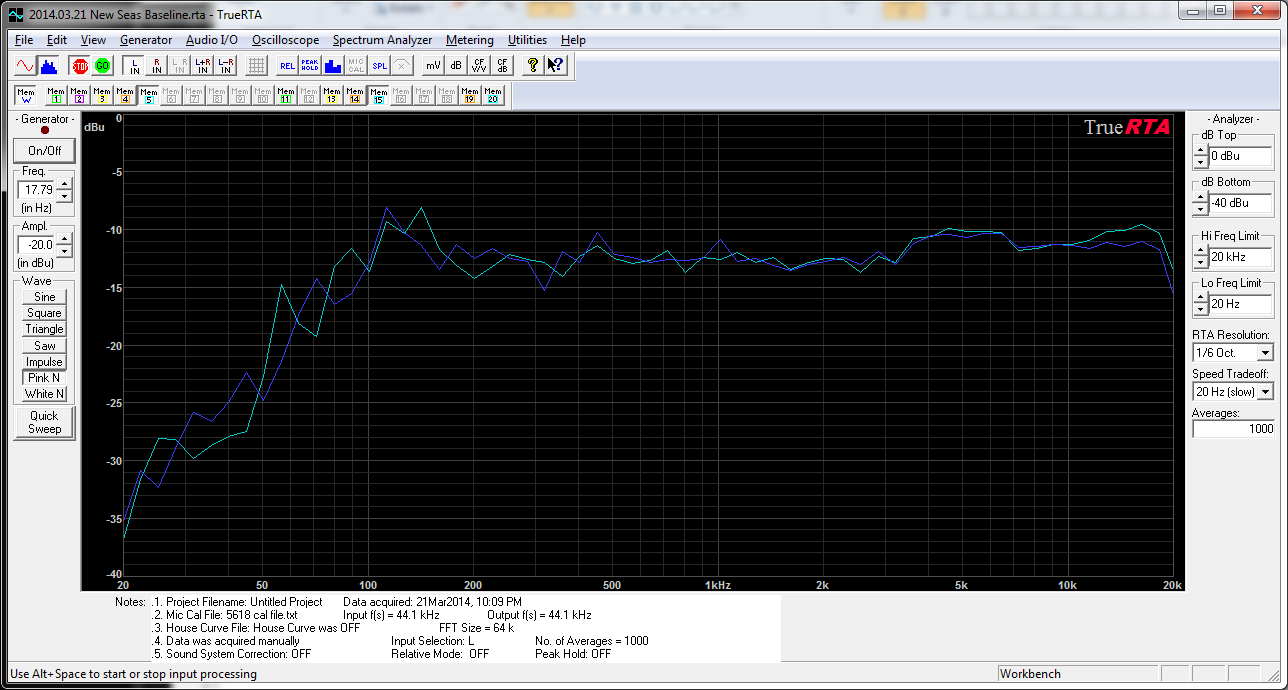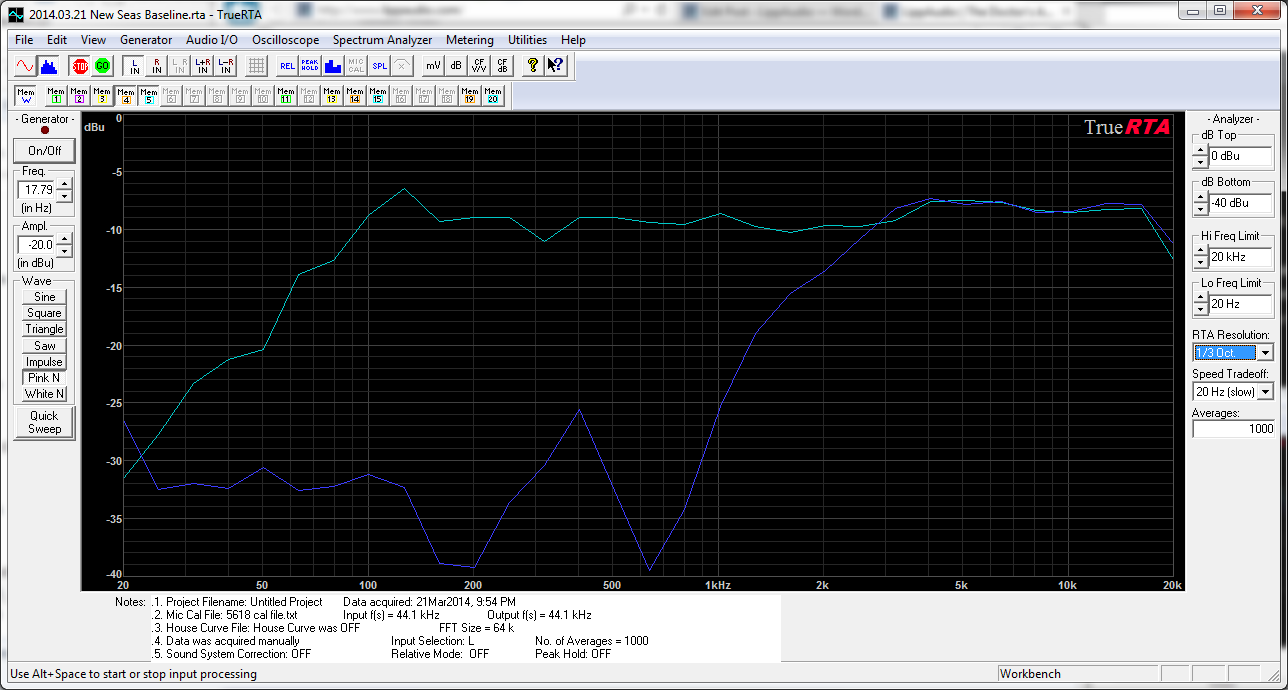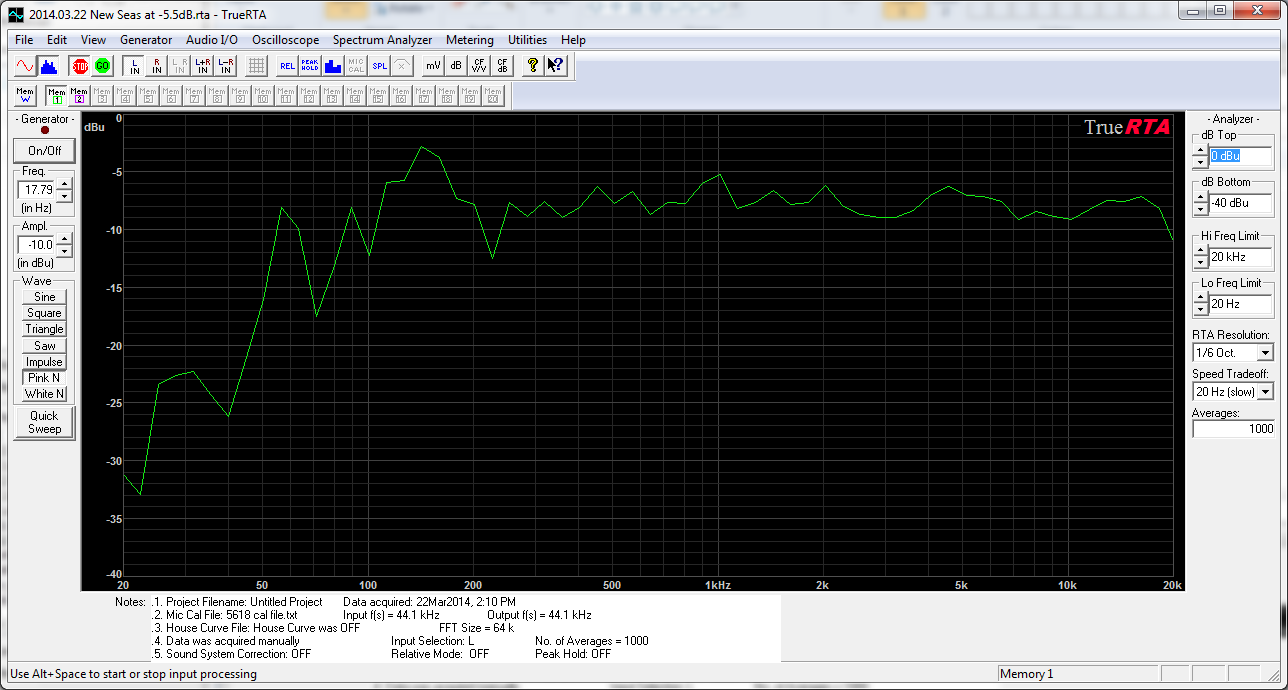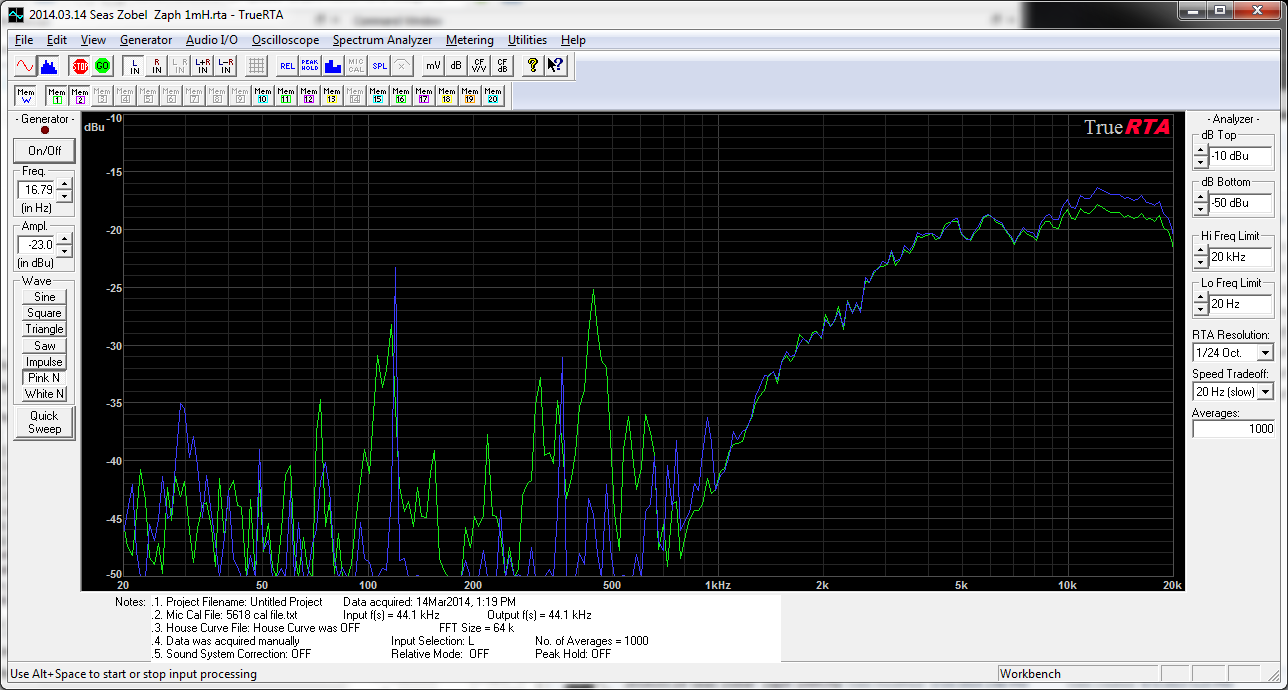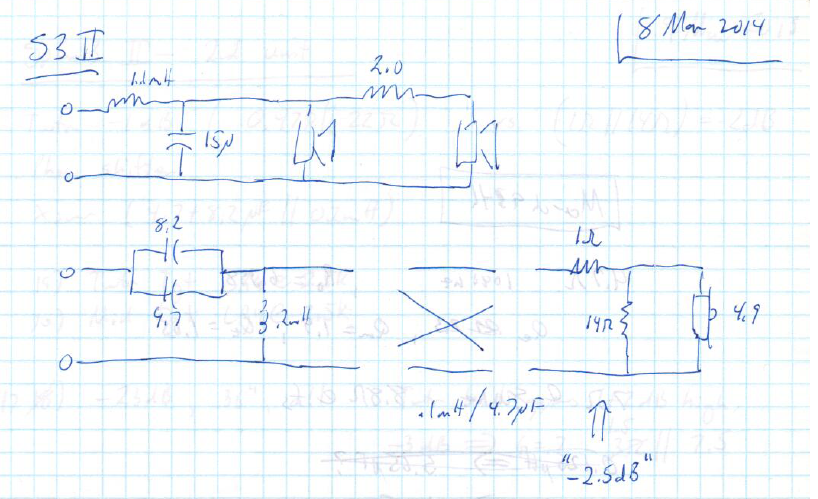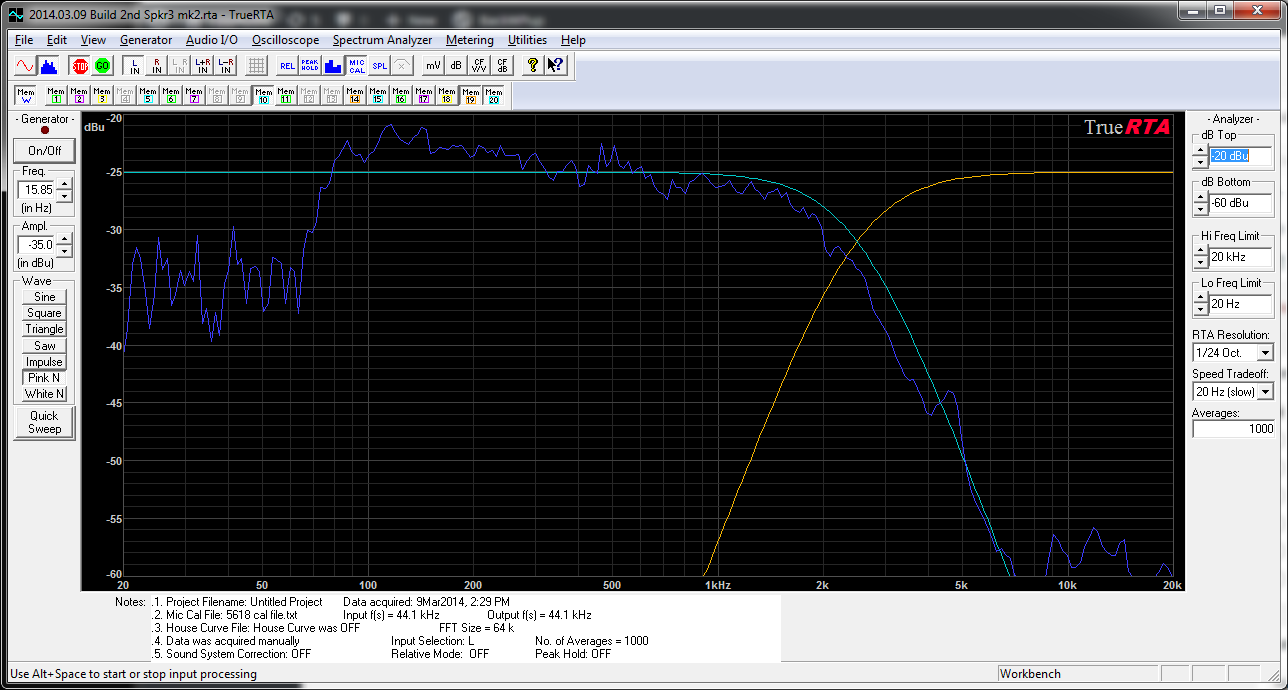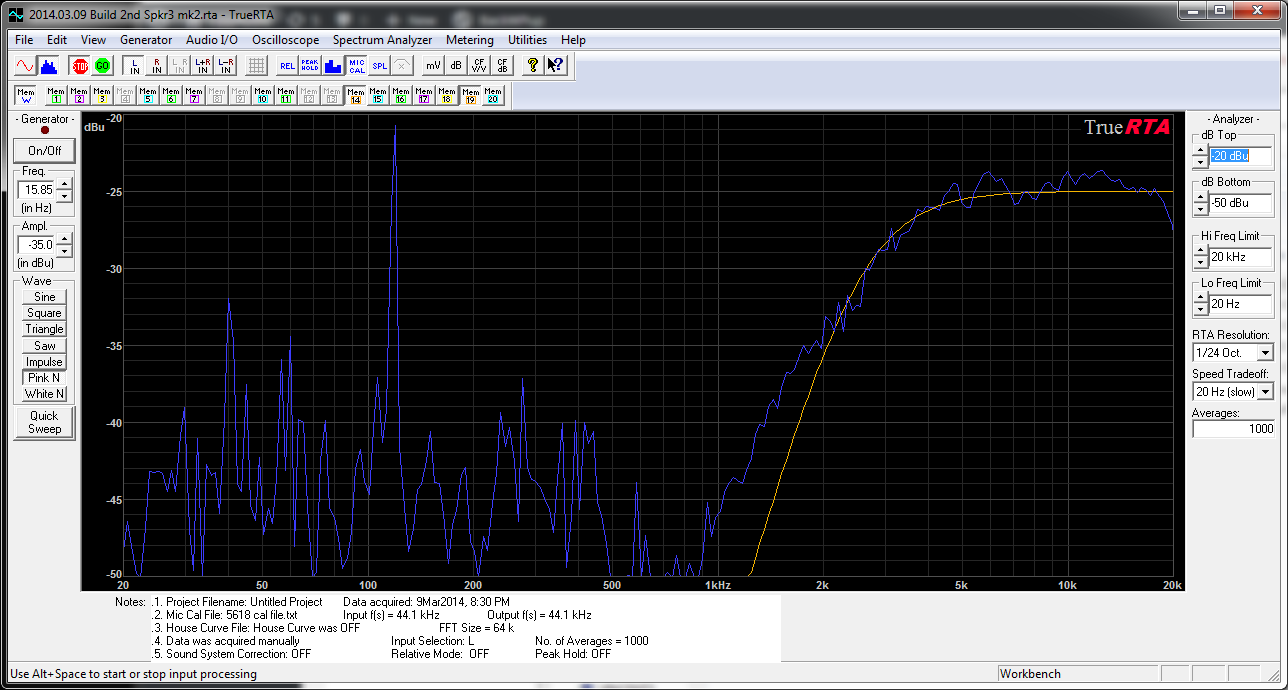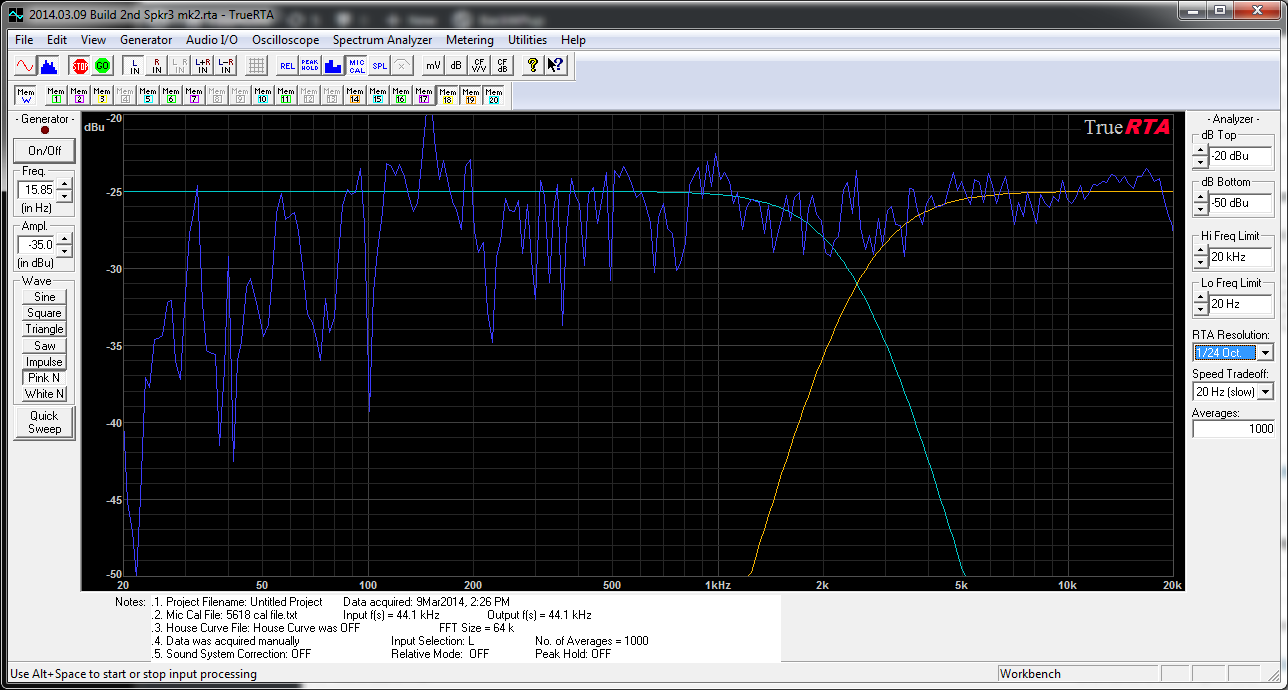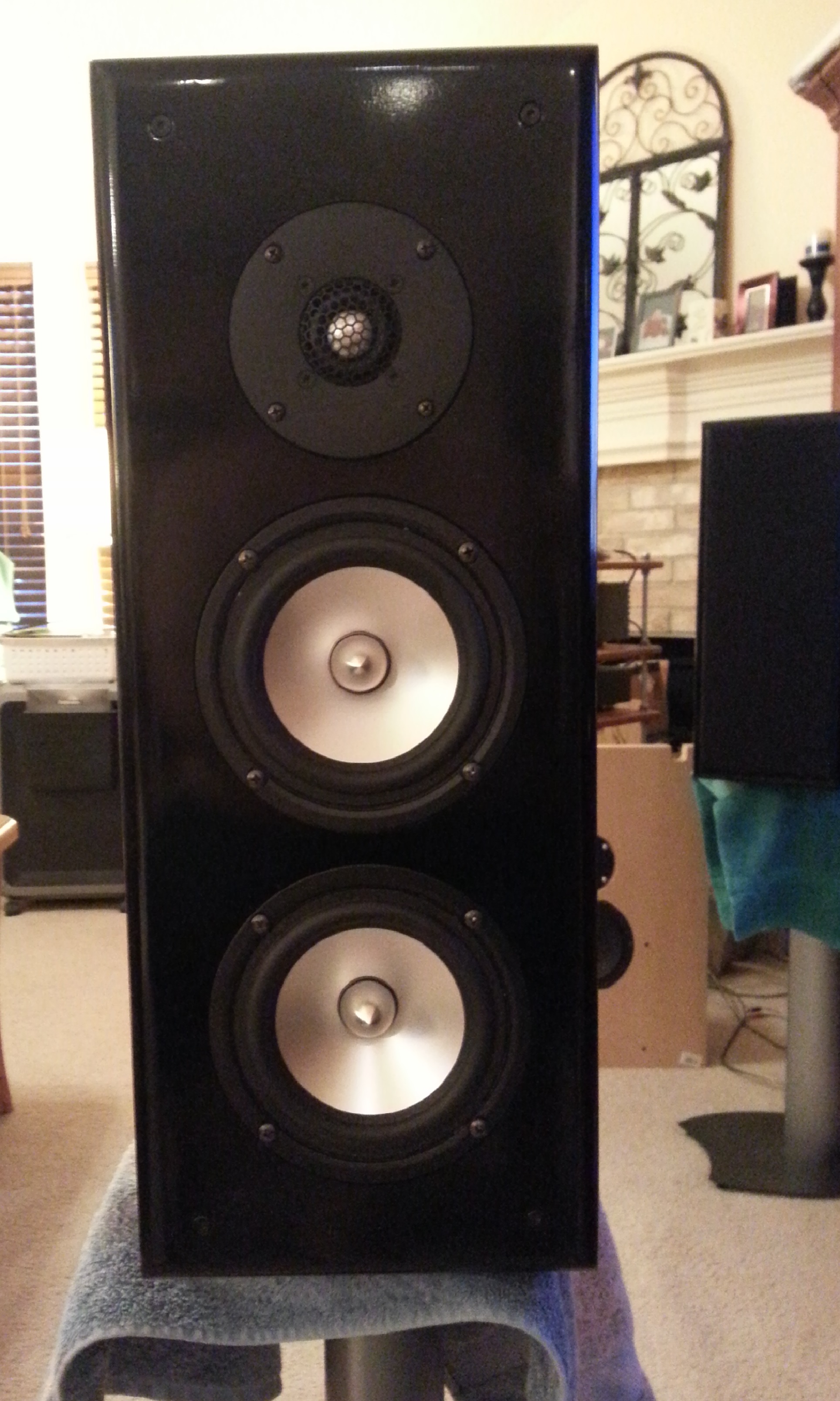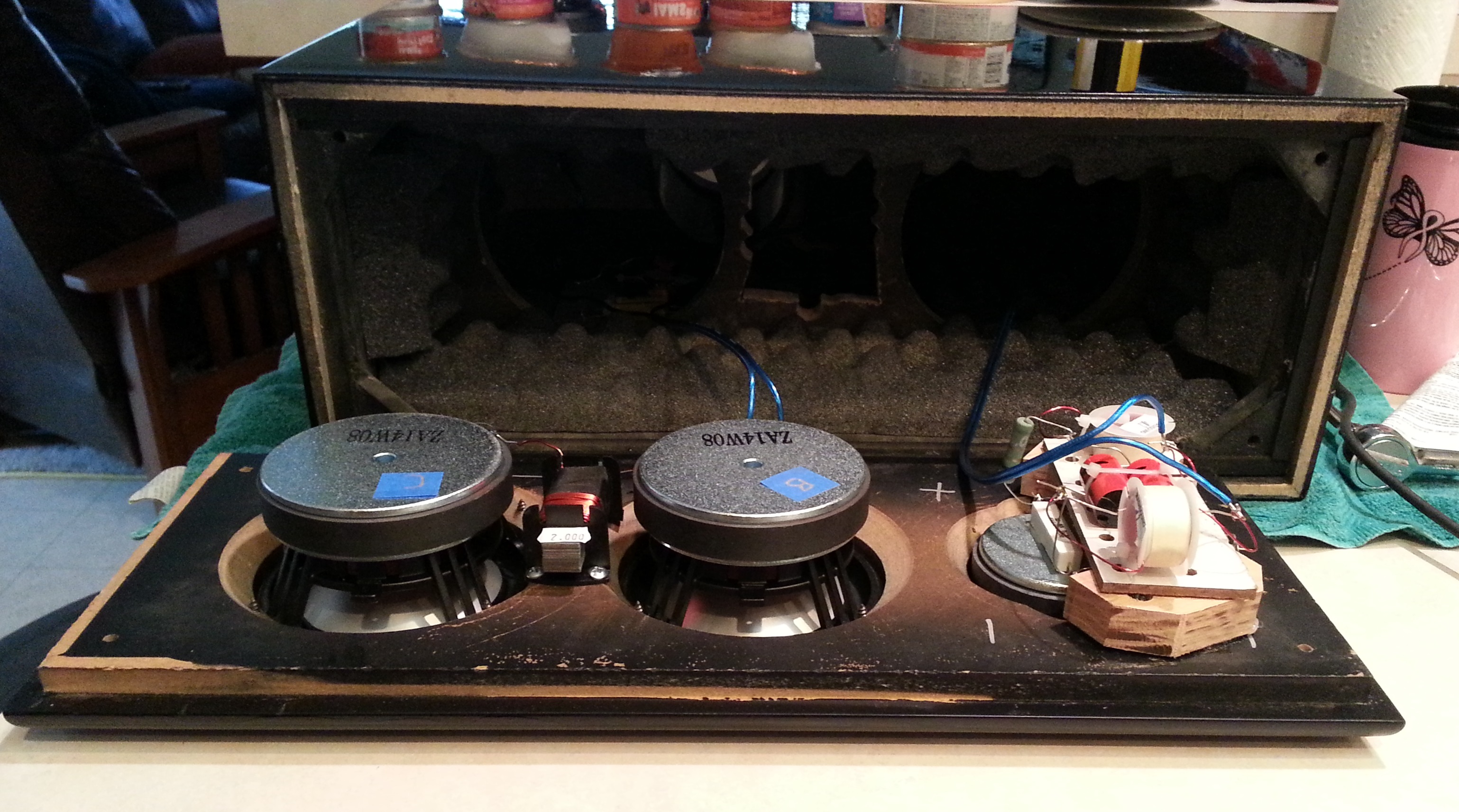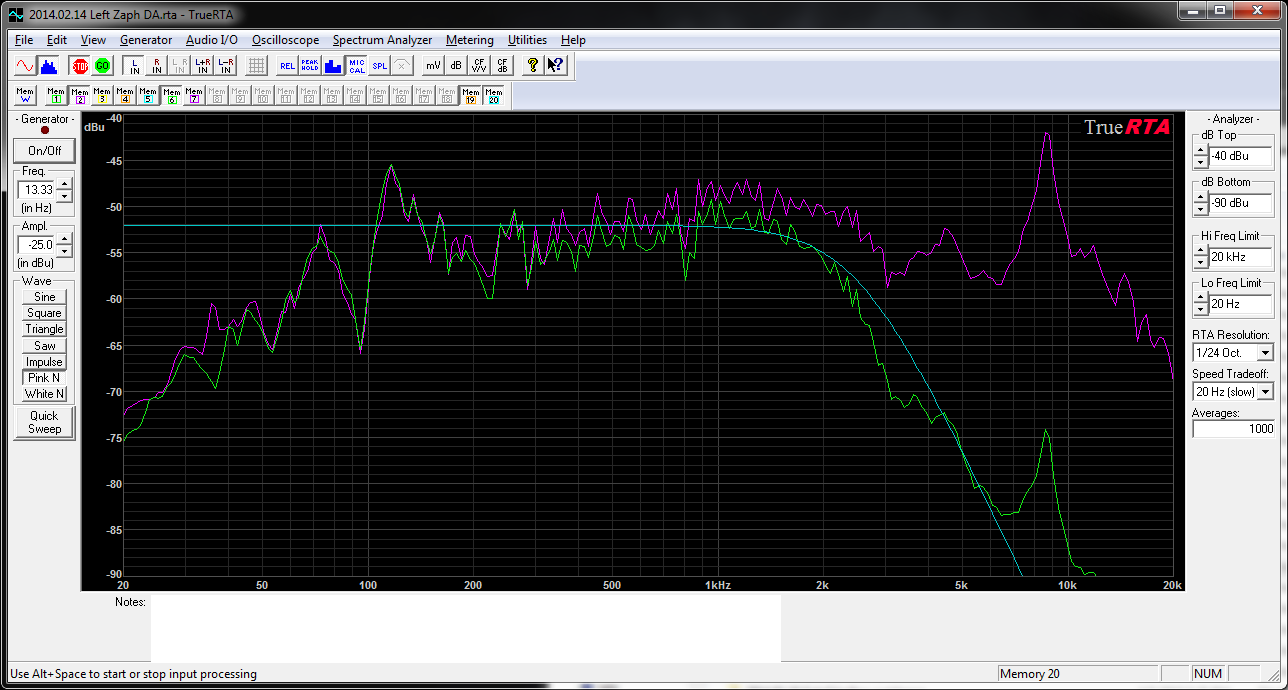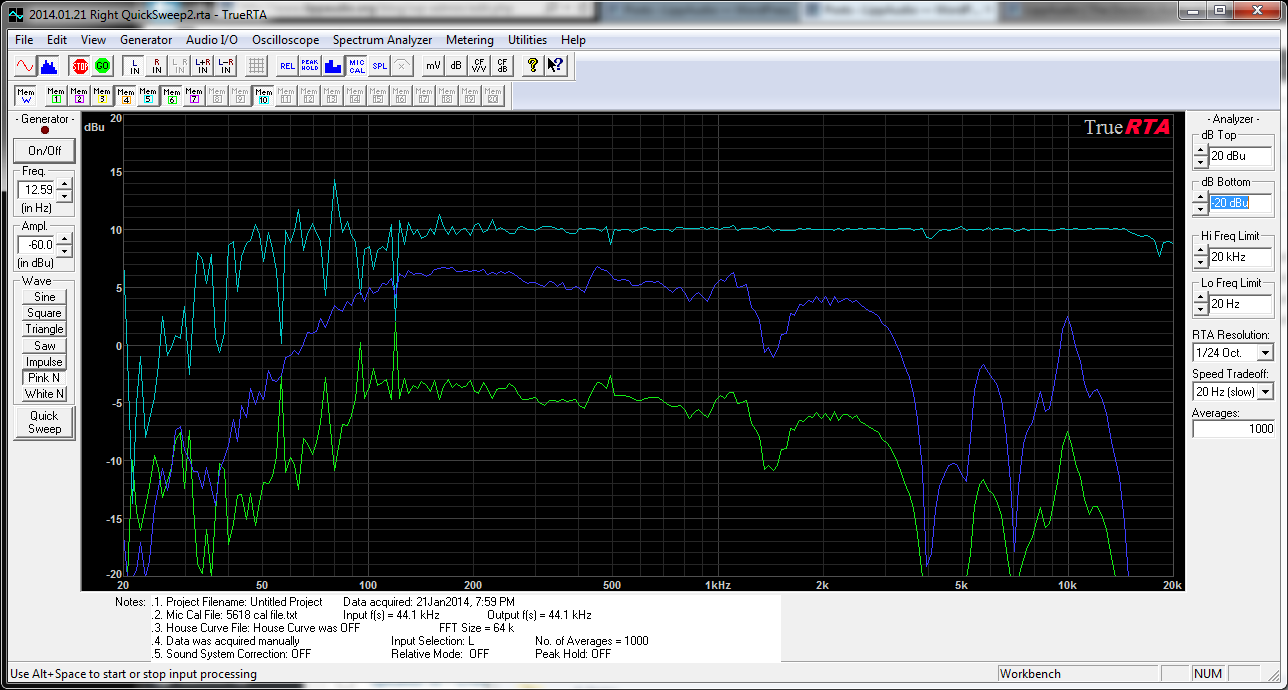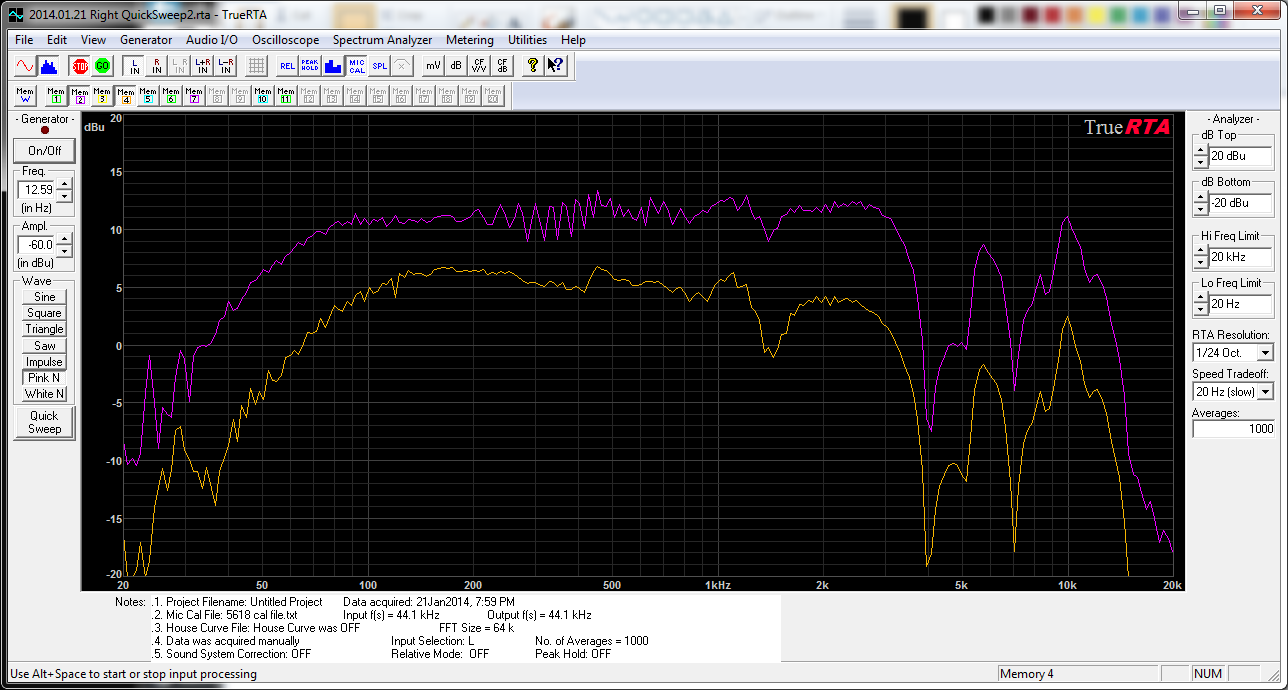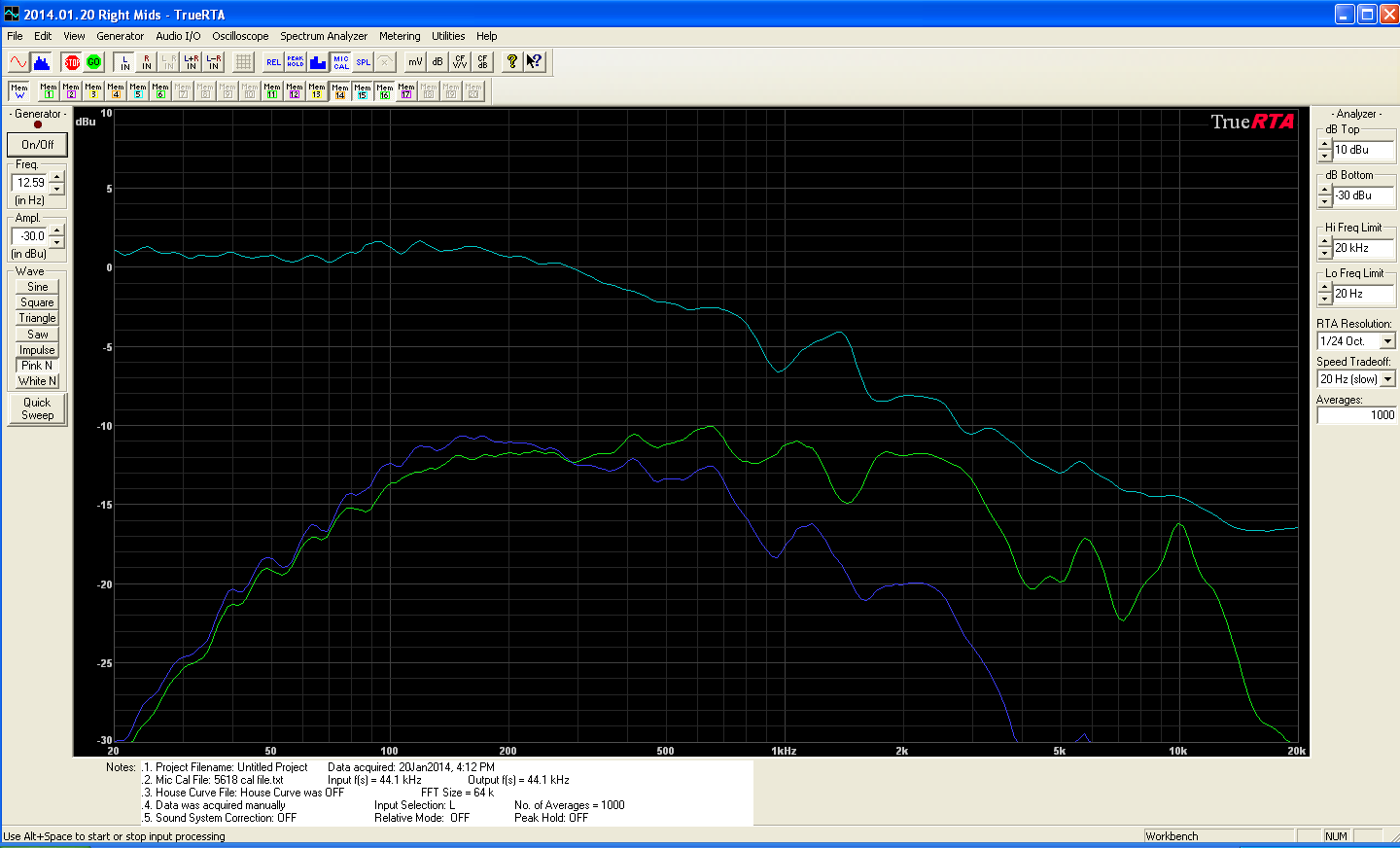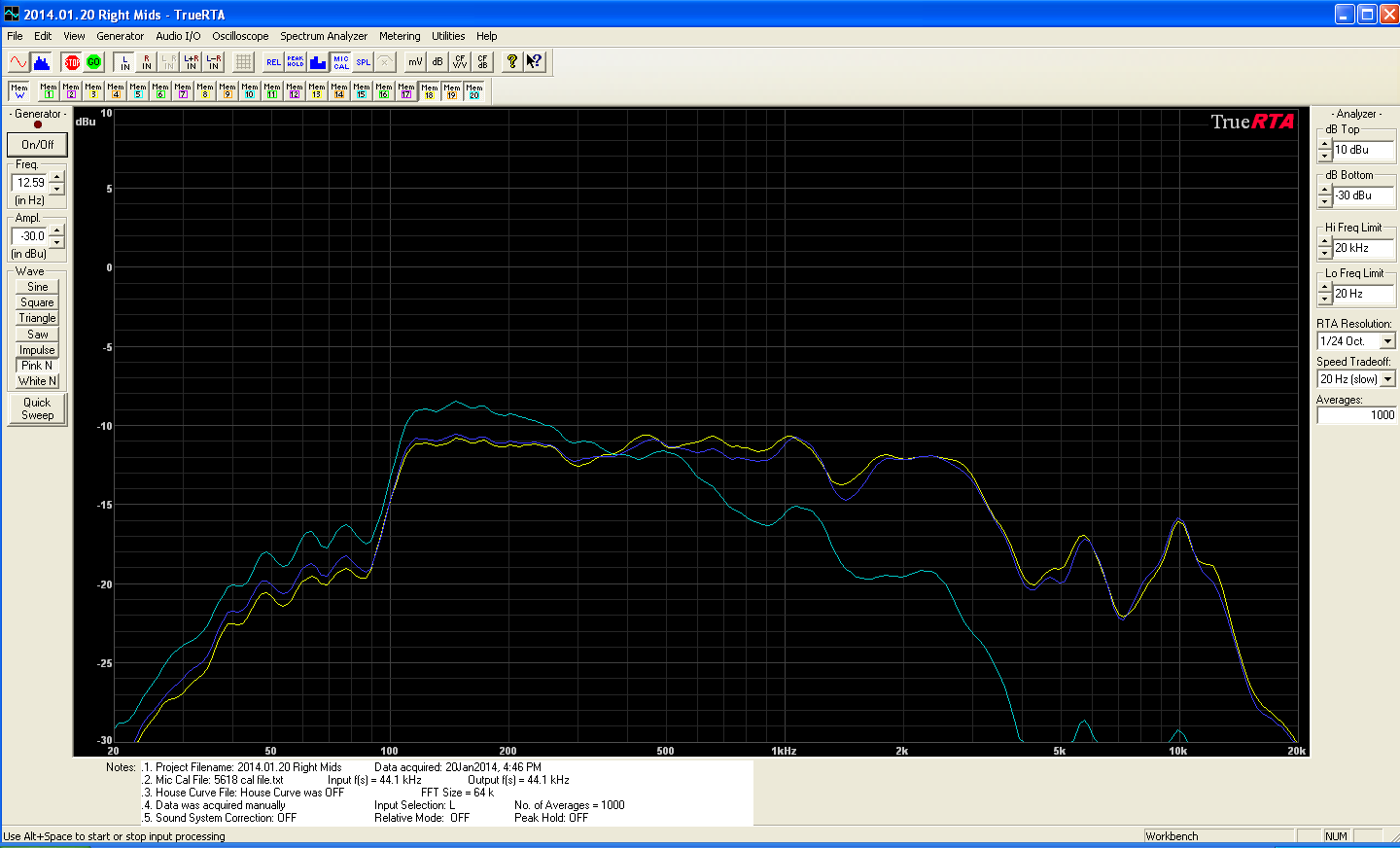My instincts are telling me that the PVR Audio 18SW2000 is not going to work out for my project goals. Not enough Xmax. Not even close. Also, the Vas is larger than advertised, the appropriate box for a Qtc of 0.707 is more like 3.0 cu.ft. and the fc will then be around 67 Hz.
So I started looking for an alternative 18″ driver. After reading various reviews, the B&C drivers looked like a good candidate. Their 18TBX100 came out a few years ago. Reviews consistently said “this is the 18″ pro sub driver to beat.” Then B&C came out with the 18TBW100 to one-up their own accomplishment. The spec sheet is impressive. Mechanical limit is over +/- an inch without damage! B&C also measures what they call Xvar, the point at which one or both of the suspension or magnetic circuit have diminished to 50% of the small signal values. The magnetic circuit also has shorting rings so that high power levels don’t contribute as much distortion. This is a feature I see in all the top tier sub woofer drivers – pro and home theatre. The cost is double the PVR Audio 18SW2000… and I’m guessing its twice the driver. Just what I need!
